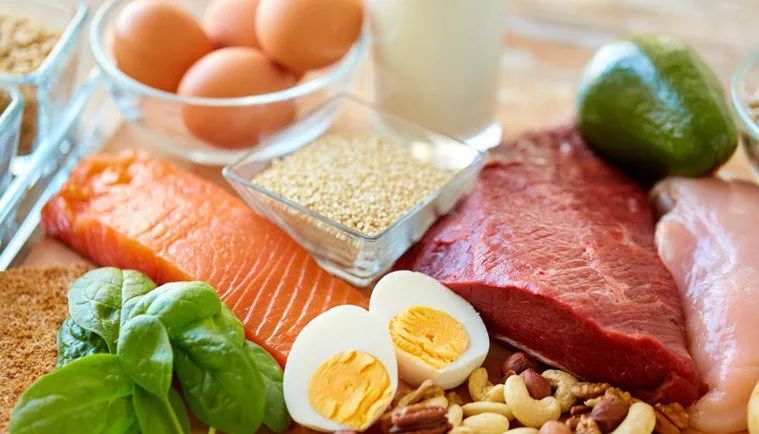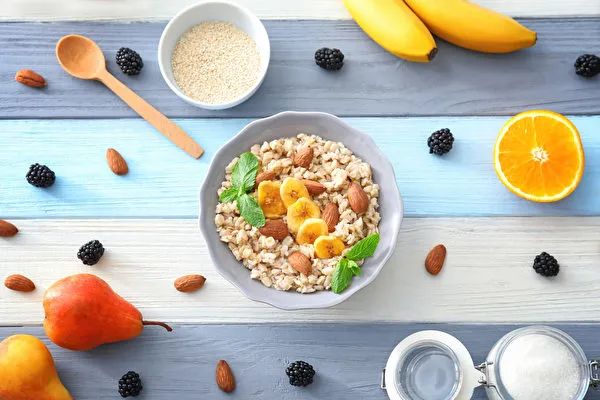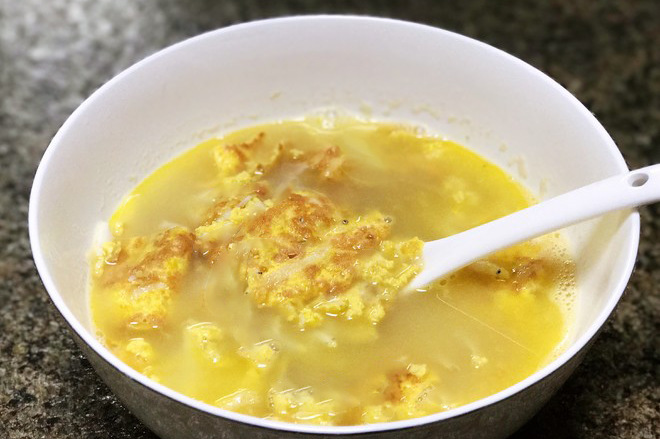
Guiding Expert: Dr. Huang Suiping, Chief Physician of Traditional Chinese Medicine, Professor, Doctoral Supervisor, Postdoctoral Collaborator, Renowned TCM Physician in Guangdong Province, currently the Administrative Director of the Spleen and Stomach Department at Guangdong Provincial Hospital of Traditional Chinese Medicine.
01
Why Three Meals a Day is Better than Eating More Frequently?
Three meals a day have undergone long-term, large-sample “daily experiments.” Although in the past, during difficult living conditions, people might not have had three meals a day, the habit of three meals in China has a history of thousands of years. This dietary habit can be traced back to Zhuangzi’s saying, “Those who adapt to the wild return after three meals, and their stomachs are indeed satisfied,” or the poem by Southern Song poet Lu You, “After walking over a hundred steps, I enjoy every three meals.”
Nowadays, with greatly improved living conditions, whether domestically or abroad, most people’s eating pattern is three meals a day. In evidence-based medicine, for example, the effectiveness of a treatment must be supported by evidence, verified through a certain number of samples and time. The three-meal system has been repeatedly validated and passed down through countless people’s “daily experiments” over thousands of years, making it the most suitable eating pattern for the majority.
Three meals a day align with people’s daily rhythms. Although work hours vary due to different jobs, generally speaking, most work hours still conform to the pattern of “working at sunrise and resting at sunset.” Having breakfast before work, lunch during a break, and dinner after work not only replenishes the body’s energy but also satisfies the appetite, providing some comfort to the body and mind after labor.
Three meals a day align with the digestive rhythm of the stomach and intestines. Generally, the time for the stomach to empty varies with different foods, but it usually takes about 4-5 hours to empty completely. After the stomach is empty, one feels hungry and it is suitable to eat again, putting less burden on the digestive system. At night, since the body and mind need to rest, it is easier to enter a sleep state, and lying down prevents gastric reflux. Therefore, three meals a day are more in line with our gastrointestinal digestive rhythm. Infants and young children have different eating patterns due to growth and development needs, but it is also recommended that children over one year old not be fed at night.
02
Have you been eating well with a weak spleen and stomach?
A significant portion of patients in outpatient clinics, especially younger ones, share a common point before falling ill: irregular eating habits, whether in meal timing or portion sizes, are a major cause of spleen and stomach damage.
People who do not eat on time for a long time often find themselves in a state of hunger, where gastric acid cannot be neutralized in time. Moreover, long periods without food can diminish the stomach’s ability to secrete mucus, weakening the protective barrier of the gastric mucosa, which cannot resist the attack of gastric acid, leading to damage of the gastric mucosa, inflammation, erosion, and even causing gastric and duodenal ulcers and bleeding.
Eating in a state of extreme hunger can trigger binge eating, causing the stomach to bear a burden it cannot handle, which can also lead to gastric mucosal inflammation, and in severe cases, acute gastric dilation or acute pancreatitis.
Short-term irregular eating may cause temporary symptoms such as abdominal bloating and pain, but if this continues, acute digestive issues may become chronic, leading to chronic gastritis, gastric ulcers, gastric tumors, and other digestive system diseases.
■ Three Meals a Day Nourish the Spleen and Stomach
I often say that treating stomach diseases is “30% treatment and 70% nourishment.” Many friends find it difficult to grasp this “70% nourishment”; in fact, it is quite simple: eat well at three meals a day: regular timing and portion control, not too cold or too hot, and chew slowly and thoroughly, which completes more than half of the task.
■ Eat Regularly and in Moderation
It is recommended to eat three meals a day at regular times and in moderate amounts; even if you are not hungry, you should eat a little when it’s time, to avoid the damage to the spleen and stomach caused by extreme hunger or fullness, keeping the stomach active regularly. Each meal should be about 70-80% full, and when feeling very hungry, you can slow down your eating pace, which helps increase the feeling of fullness and avoid binge eating.
■ Food Temperature Should Be Warm
As the saying goes, “Nine out of ten people have stomach issues, and nine out of ten stomachs are cold,” most people with chronic stomach issues have a deficiency of spleen and stomach yang. Regular consumption of cold foods can exacerbate the situation, so it is best to eat warm meals for all three meals, especially in the morning when the yang energy of the stomach and intestines is just beginning to revive, and cold foods should be avoided. Of course, eating while it’s hot does not mean eating while it’s scalding; extremes can backfire, as overly hot food can burn the mucosa, which can also damage the spleen and stomach. One of the high-risk factors for esophageal cancer is high-temperature diets.
■ Chewing Slowly Aids Digestion
Generally, when food enters the mouth, it must first be chewed by the teeth and undergo initial coarse digestion with the help of salivary amylase before entering the stomach for further fine digestion. To put it simply, the mouth is responsible for the “coarse work,” and the stomach is responsible for the “fine work”; cooperation is essential for thorough digestion. If one gulps down food, it is equivalent to throwing all the coarse and fine work onto the stomach, inevitably causing a burden. Therefore, for three meals a day, it is also important to chew slowly and thoroughly, with a recommendation of chewing each bite 10-15 times before swallowing.

03
Dietary Therapy for Individuals with Spleen and Stomach Yang Deficiency
Self-Assessment for Spleen and Stomach Yang Deficiency
1. Observe Appearance: Dull yellow complexion, pale and lackluster lips, white and dry nose tip, thin or weakly overweight.
2. Observe Symptoms: Poor appetite, easy abdominal bloating, dull stomach pain, cold sensitivity in the abdomen, preference for warmth and pressure, loose stools, weak bowel movements, poor sleep, cold extremities, etc.
3. Observe Tongue: Pale white tongue, enlarged with teeth marks on the edges, white coating.
Friends with spleen and stomach yang deficiency may try the following dietary therapy for three meals a day, 2-3 times a week, which is more suitable for spring.
■ Breakfast to Awaken Spleen and Stomach Yang
‖ Dietary Therapy


Ginger Egg Soup
Ingredients:
1 piece of ginger, 2 eggs. (Serves 2)
Method:
Smash the ginger, beat the eggs, stir-fry the ginger slightly to release its aroma, then add the egg mixture, stir-fry, add an appropriate amount of water, bring to a boil, and season.
Effects:
Warms the center, disperses cold, awakens the spleen, and stimulates appetite.
■ Lunch with Seasonal Chives to Support Yang Energy
‖ Dietary Therapy


Stir-fried Chives with Shrimp
Ingredients:
300g shrimp, 150g chives, 3 slices of ginger. (Serves 2)
Method:
Clean the shrimp; wash and cut the chives; smash the ginger; add oil to the pan, then add shrimp and ginger to stir-fry, season, and cook on low heat for about 4 minutes; once the shrimp is flavored, add chives and stir-fry until cooked.
Effects:
Warms the center and tonifies yang.
■ Dinner with Medicinal Porridge for Easy Digestion
‖ Dietary Therapy


Huang Qi (Astragalus) and Dang Shen (Codonopsis) Chicken Porridge
Ingredients:
20g Huang Qi, 20g Dang Shen, a small amount of ginger, 250g chicken, 80g rice. (Serves 2)
Method:
Slice the ginger, marinate the chicken, and cook the rice with Dang Shen and Huang Qi to make porridge, then add the chicken and cook until done, and season.
Effects:
Tonifies qi, strengthens the spleen, and nourishes the stomach.
■
[Source: Huang Suiping on Spleen and Stomach]


